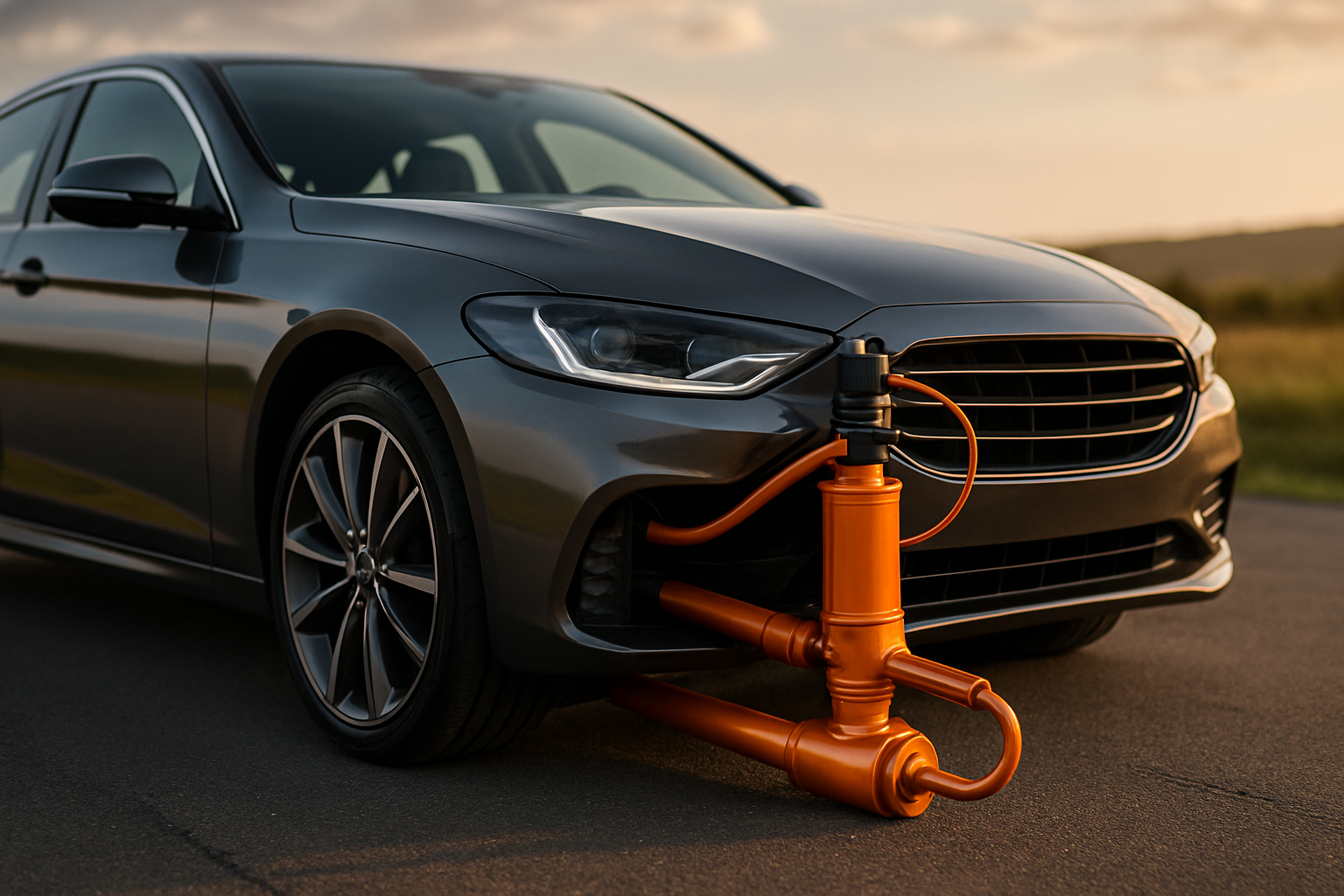Hydraulic Active Body Control: The Hidden Maestro of Automotive Comfort
Imagine cruising down a winding mountain road, your car hugging every curve with precision, absorbing bumps and dips as if they weren't there. This isn't science fiction; it's the reality of Hydraulic Active Body Control (ABC), a sophisticated suspension system that's revolutionizing the driving experience. While often overshadowed by more visible automotive technologies, ABC is quietly transforming how we perceive comfort and handling in high-end vehicles. Let's dive into the world of this unsung hero of automotive engineering.

Mercedes-Benz pioneered the system, introducing it in their flagship CL-Class coupe in 1999. The technology represented a quantum leap in suspension design, utilizing high-pressure hydraulics and advanced sensors to actively counteract body movements in real-time. This innovation allowed for unprecedented control over vehicle dynamics, marking a new era in automotive comfort and performance.
How Hydraulic ABC Works Its Magic
At its core, Hydraulic Active Body Control is a marvel of engineering that combines mechanical prowess with electronic wizardry. The system replaces traditional steel springs with hydraulic cylinders at each wheel, connected to a high-pressure pump and a series of valves. These components work in concert with an array of sensors that continuously monitor road conditions, vehicle speed, and driver inputs.
As the vehicle encounters bumps, cornering forces, or acceleration and braking, the system’s computer processes this information in milliseconds. It then adjusts the pressure in each hydraulic cylinder individually, effectively altering the suspension’s stiffness and ride height in real-time. This allows the vehicle to maintain an optimal balance between comfort and handling, regardless of driving conditions.
The Tangible Benefits for Drivers and Passengers
The advantages of Hydraulic ABC extend far beyond the theoretical. Drivers equipped with this system experience a level of control and confidence that traditional suspensions simply can’t match. When cornering, ABC actively counteracts body roll, keeping the vehicle flat and stable. This not only enhances handling but also reduces passenger discomfort during spirited driving.
On rough roads, the system’s ability to anticipate and react to surface irregularities results in a ride quality that borders on magical. Bumps and potholes that would typically jostle occupants are smoothed out, creating an almost floating sensation. Moreover, ABC can adjust the vehicle’s ride height, lowering it at high speeds for improved aerodynamics and raising it for increased ground clearance when needed.
Challenges and Criticisms
Despite its impressive capabilities, Hydraulic Active Body Control is not without its detractors. The system’s complexity and reliance on high-pressure hydraulics have raised concerns about long-term reliability and maintenance costs. Critics argue that the potential for leaks and the need for specialized service can make ABC a costly proposition for vehicle owners beyond the warranty period.
Additionally, the system’s weight and energy consumption have been points of contention. The hydraulic pump and associated components add significant mass to the vehicle, potentially offsetting some of the handling benefits. The constant operation of the pump also places additional load on the engine, which can impact fuel efficiency.
The Future of Active Suspension Technologies
As automotive technology continues to evolve, so too does the landscape of active suspension systems. While Hydraulic ABC remains a benchmark for performance and comfort, newer technologies are emerging to address its limitations. Electromechanical active suspensions, which replace hydraulic components with electric actuators, promise similar capabilities with reduced complexity and energy consumption.
Furthermore, the integration of predictive technologies and artificial intelligence is set to take active suspension to new heights. Imagine a system that can read the road ahead using cameras and topographical data, preemptively adjusting the suspension for optimal performance and comfort. Such advancements could make the dream of a perfectly smooth ride on any surface a reality.
Hydraulic ABC’s Legacy in Automotive Engineering
Although Hydraulic Active Body Control may eventually be supplanted by newer technologies, its impact on automotive engineering cannot be overstated. The system has pushed the boundaries of what’s possible in vehicle dynamics, inspiring a new generation of suspension innovations. From luxury sedans to high-performance sports cars, the lessons learned from ABC continue to influence how engineers approach the challenge of balancing comfort and handling.
As we look to the future of automotive technology, it’s clear that the spirit of innovation embodied by Hydraulic ABC will continue to drive progress. Whether through refinements to existing systems or the development of entirely new approaches, the quest for the perfect ride remains a central focus of automotive engineering. In this ongoing journey, Hydraulic Active Body Control stands as a testament to what’s possible when ingenuity meets technology in the pursuit of automotive excellence.





